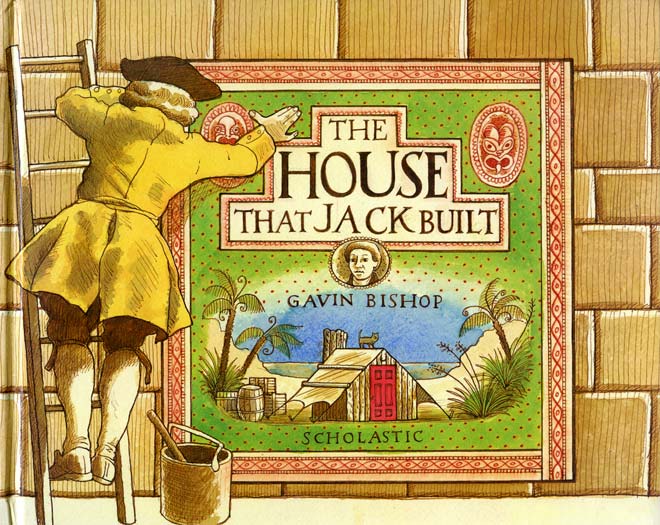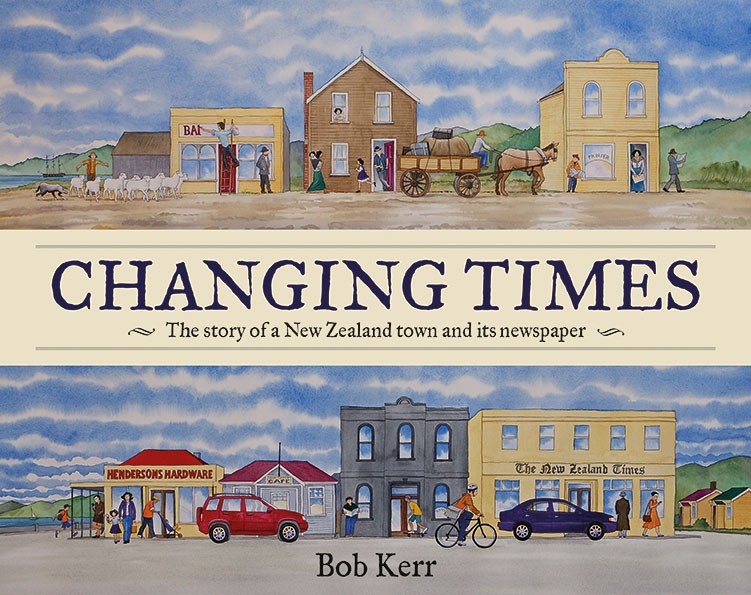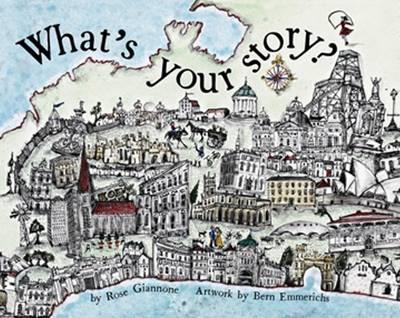By Janelle Mathis, University of North Texas
Our final topic for September, “change over time,” may seem like a natural occurrence and not necessarily an issue of concern. However, we know it all depends on the change and how it is perceived by different individuals. As a global issue, change over time can involve people, places, environmental issues, and cultural perspectives, to mention a few.
I was recently reminded of the importance of this topic within international literature as I read The House that Jack Built by Gavin Bishop, published by Gecko Press. I realized after reading this book that the illustration on the cover of a recent issue of BookBird, focusing on August’s IBBY Congress in New Zealand, was taken from Bishop’s book. Bishop, a New Zealand creator of picture books, uses perspectives that relay the issue(s) associated with the topic of change during a colonial era as well as illustrative techniques that tell stories appealing to the artistic semiotic system of the reader.
Using the rhythmic pattern of the familiar poem, “The House that Jack Built,” the book begins with a brief note that states Jack Bull Esq. landed in Aotearoa, New Zealand from far away in 1798. Over the course of the following pages, the poem format is used to relate the changes to the land over time using historical images with borders and, occasionally, Mᾱori images to complement the page drawings.
The text additionally makes use of Mᾱori words and names, maintaining authenticity of the history described here from a Mᾱori perspective. The depiction of the land wars in a final image, showing a burning house before a huge monster with the words, “And this was the house that Jack Built,” culminates the cultural and environmental struggles of the changes induced between the Pᾱkehᾱ (European settlers) and Mᾱori. This final image offers points for discussion about the ongoing effects of colonization across the globe.
During the IBBY Congress that was recently held in Auckland, New Zealand, I discovered another book that speaks to a slightly different perspective on change over time. It is aptly titled Changing Times, written by Bob Kerr, published by Potton & Burton. The story follows James and Mary McPherson, who emigrated from Scotland to New Zealand in 1840. With illustrations in graphic format and various sized frames, the story reveals the challenges of colonial life, World War I, the Depression of the 1930s, World War II, and leads to present day with a digital world and online newspapers.
The historical elements are unique to New Zealand; however, they relate the universality of change over time. The New Zealand Times, a focus of this book, reflects this change in both text and Kerr’s images. Its citizens honor the newspaper for its presentation of historical news over time. Told through the eyes of a newspaper boy who delivers the last issue, the story’s final text includes his remark to his mother, “Times change, mum.”
Yet another book that reflects the theme of “change over time” is What’s Your Story? by Rose Giannone, artwork by Bern Emmerichs, and published by Berbay Publishing. With a focus on the importance of story in the lives of all people and nations, this book relates change over time through the immigration story of a boy on a ship from England to Australia, also during a period of colonization. The ship is greeted by indigenous people, and over time the boy who traveled alone meets an indigenous girl and their friendship develops despite the lack of a similar language. Each occasion to play and interact brings a new opportunity for learning and for change.
As they each grow older and go in different directions, their individual lives and thoughts are forever changed by their seemingly unlikely friendship. The stories of our lives are multiplied and change over time because of the people we meet and events that we experience. Whether we perceive this change as an issue that presents challenges or one that calls for celebrations, it helps us consider the people we meet over time as one perspective on change. This change over time speaks to the complexity of “change” — its origins, supporters, resistors, and ultimate outcomes, for better and for worse.
Do you have a favorite book to pair here with the notion of “change over time?” Perhaps you have a title that shares a different perspective and can open up critical discussions about the importance of the global community, the role of technology, the potential of political and social decisions, or the care we must give our planet?
Journey through Worlds of Words during our open reading hours: Monday through Friday 9 a.m. to 5 p.m., Saturday 9 a.m. to 1 p.m. Check out our two online journals, WOW Review and WOW Stories, and keep up with WOW’s news and events.
- Themes: Janelle Mathis
- Descriptors: Books & Resources, WOW Currents



